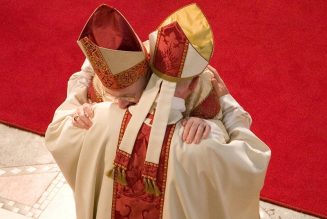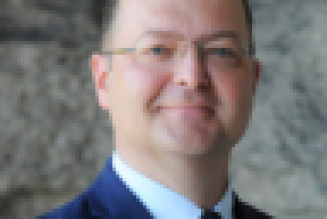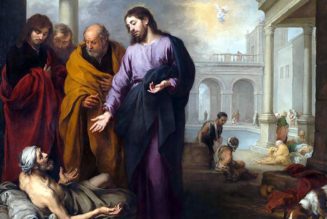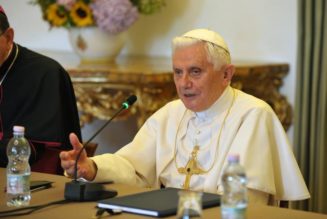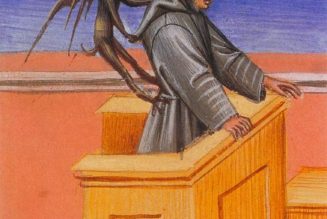 |
How did it happen? That’s the question the McCarrick Report was supposed to answer. How many of the bishops knew about his beach house? Who turned a blind eye? Who lied to protect one of their own?
Nobody expected the Report to answer those questions, and so nobody will be disappointed. Still, it was revealing.
The McCarrick Report drives home one detail that many of us forgot: there never really was a “smoking gun.” There was no hard evidence of sexual assault. Hardly anyone was willing to come forward and testify to McCarrick’s misdeeds. There were rumors, of course, and lots of them. But the Vatican is not in the habit of defrocking priests (let alone bishops) over rumors.
McCarrick knew that, and he used it to his advantage. In 1993, an anonymous letter began circulating among the U.S. bishops warning that McCarrick—then Archbishop of Newark—was seducing seminarians. In response, Archbishop McCarrick wrote a smug letter to the Vatican, saying: “You might want to know that I have shared [the letter] with some of our friends in the FBI to see if we can find out who is writing it.”
So, nobody had any real dirt on McCarrick, and anyone who spoke against him was threatened with legal action.
The first person to openly accuse McCarrick only came forward in 2005, and his was a difficult case. This victim, whom the Report refers to as “Priest 1,” only spilled the beans when he himself was found abusing young boys. According to his testimony, Priest 1 said:
I met with Bishop Hughes in his office and I just told him that I had done some things that I’m not proud about. I allowed myself to get involved with two minors. I started crying and apologizing. And I just said that, you know, I need some help. And then, as my tears were coming out, I said, you know, I just, there’s certain things that I can’t get off my chest, and can’t forget in my mind, and that goes back to the times that I’ve experienced sexual abuse with Bishop McCarrick and what took place with him and the surroundings with him and other priests.
The Vatican treated Priest 1 as an unreliable witness—not only because he was a predator, but also because he claimed the abuse took place twenty years prior. How could anyone prove anything?
When Pope Francis finally brought McCarrick down in 2018, it was on the flimsiest circumstantial evidence. McCarrick’s final descent was precipitated by a New York Times report saying that he’d molested the teenaged son of a family friend in the 1980s. They were, by far, the oldest allegations against him. They were also uncorroborated—unlike the beach house incidents, which were semi-public. They also didn’t fit his modus operandi: McCarrick was known to prefer muscular men in their mid-twenties, not little boys.
The Times story broke in July of 2018. In February of 2019, a canonical court laicized McCarrick. He wasn’t even allowed to testify at his own trial.
McCarrick is guilty as sin, of course. But the Vatican had to be far more arbitrary in punishing him than (for instance) an American court would have been. It’s all right and good that Rome has more freedom to act; after all, the Church is a divine-right monarchy. But, again, the evidence against McCarrick was flimsy. He was nothing if not devious. In the end, Pope Francis set a lower standard for proof of guilt—much lower than you or I would care to be tried by. In the end, that was the only way they could bring him down.
❧
The looming question, then, is this: How did McCarrick become so powerful in the first place? Alas, it seems that a great deal of the blame lies with Pope John Paul II.
Early in the year 2000, John Paul had to begin planning for the imminent retirement of James Cardinal Hickey, the Archbishop of Washington. John Cardinal O’Connor, then Archbishop of New York, presented His Holiness with a list of possible candidates in order of suitability. McCarrick’s name was sixteenth from the top. John Paul had twice passed over McCarrick for promotion, once to Chicago in 1997 and once to New York in 1999 (O’Connor himself had been looking for a successor). Cardinal O’Connor repeated his concerns about McCarrick, reminding the Pope that he was widely believed to be a sexual predator.
McCarrick caught wind that O’Connor was whispering against him and wrote a letter to John Paul’s secretary, Bishop Stanisław Dziwisz. “In the seventy years of my life,” wrote McCarrick, “I have never had sexual relations with any person, male or female, young or old, cleric or lay, nor have I ever abused another person or treated them with disrespect.” John Paul apparently took him at his word and appointed him Archbishop of Washington; a few months later, he named him a cardinal.
From that point on, McCarrick was ex officio one of the most powerful and influential prelates in the American Church. Because of John Paul’s extraordinary failure in judgment, it become infinitely more difficult to bring McCarrick down—especially on rumor alone.
Since the McCarrick Report was released on Tuesday, a number of respected Catholic journalists—particularly George Weigel and Robert Moynihan—have accused Francis of throwing John Paul under the bus. To be sure, the Report shows that our Holy Father is only too eager to pass the blame on McCarrick. (More on that later.) I’m sorry, but John Paul made a terrible decision by elevating McCarrick.
We can’t ignore the fact that McCarrick’s rise to power took place almost entirely under John Paul’s watch. We can’t just say, “John Paul II was deceived by McCarrick’s prevarication,” and be done with it—not unless we’re willing to similarly absolve every other priest, bishop, and pope who heard the rumors about McCarrick but chose not to act on them.
❧
Of course, we can’t lay the blame entirely on John Paul’s shoulders, either.
Benedict XVI succeeded John Paul in 2005. The Report suggests that he had no prior knowledge of McCarrick’s alleged misconduct. Rather, “At the beginning of the papacy of Benedict XVI, the information received by the Holy See related to McCarrick’s misconduct was generally similar to the information that had been available to John Paul II at the time of the appointment to Washington.” That seems doubtful. Benedict served as prefect of the Congregation for the Doctrine of the Faith from 1981 until his election as pope. It’s hard to believe there was any rumor in the Vatican to which he wasn’t privy.
Regardless, on the advice of his nuncio, Benedict extended McCarrick’s tenure as Archbishop of Washington for two years. That was obviously a mistake, and one that Benedict quickly came to regret.
Between 2006 and 2008, Archbishop Carlo Maria Viganò—then working for the Vatican’s Secretariat of State in Rome—wrote two memos raising the problem of McCarrick’s abuses. Here, the McCarrick Report corroborates Viganò’s famous 2018 “testimony.”
In 2006, Pope Benedict charged Giovanni Cardinal Re, prefect for the Congregation for Bishops, to pressure McCarrick into withdrawing from public ministry. Over the next two years, the men clashed as McCarrick refused to go quietly into retirement. In 2008, Cardinal Re ordered McCarrick to (among other things) leave his residence in the Redemptoris Mater seminary in the Archdiocese of Washington and abandon all future domestic and international travel. As Cardinal Re wrote in a June 14 letter,
Your Eminence’s frequent public appearances at gatherings, some of which are reported in the media, causes others to recall yet again the old accusations and contributes to their being even more widely known.
As I have already said to you in the past, such a negative campaign requires that Your Eminence behave in such a way as not to draw attention to yourself. There is only one way to achieve this: not to make public appearances and to conduct a quiet life of prayer and penance for past imprudent actions.
It isn’t the most edifying letter, but—again—one must remember how little evidence corroborated these “old accusations.” That isn’t an excuse: merely an explanation.
McCarrick then went into a kind of semi-retirement, occasionally but flagrantly flouting the pope’s restrictions. Benedict would have been wise then to slap him with charges of disobedience, but perhaps feared that a popular and powerful cardinal’s sudden disappearance from public life would cause suspicion. We don’t know, and we may never know.
❧
Things remained more or less the same until 2012. That year, another of McCarrick’s victims came forward. “Priest 3” belonged to the Diocese of Metuchen, where McCarrick served as bishop from 1981 until 1986. Priest 3 filed a complaint with Archbishop Viganò—who, by then, had been named Papal Nuncio to the United States.
Here’s where things get interesting.
According to the McCarrick Report, Viganò asked the new prefect of the Congregation for Bishops, Marc Cardinal Ouellet, what to do about these allegations. Remember, this is only the third victim to come forward. (“Priest 2” requested laicization a year after he was ordained. He maintains that his encounters with McCarrick did not affect his decision. He struck up an affair with a laywoman and wanted to leave the priesthood so they could marry and have children.)
The Report claims that Cardinal Ouellet then asked Archbishop Viganò to investigate McCarrick. He was told to speak to Priest 3, as well as Metuchen’s Vicar General and the Vicar for Clergy. According to Priest 3, Viganò never reached out. In his testimony, Priest 3 said that he was “disappointed” by Viganò’s silence and “felt that the Nuncio was not paying attention to something that to me was very important.”
In fact, Viganò appears to have kept up a friendly correspondence with McCarrick. In February of 2014, the latter met with then-Speaker of the House John Boehner to discuss “immigration reform” (i.e., open borders). Viganò later wrote to McCarrick, “I am truly grateful for your efforts in promoting immigration reform, as well as for your availability to someone like Speaker Boehner. Likewise, know that it was a pleasure for me to speak with [you] on the telephone earlier this month.”
Let me say this before going on. When Viganò published his 2018 testimony, I believed him. In fact, I still do. I believe that he warned the Vatican about McCarrick several times between 2006 and 2014. But the Vatican doesn’t deny that. Instead, they’re now saying: “Yes, Viganò told us. And we ordered him—our most senior representative in the United States—to investigate. He didn’t. How were we supposed to proceed without any evidence against McCarrick—evidence that he, Archbishop Viganò, was charged with gathering?”
Just hours after the Report was published, Viganò issued a statement saying: “I cannot help expressing my indignation in seeing the same accusations of cover up being made against me, when in fact I repeatedly denounced the inaction of the Holy See in the face of the gravity of the accusations concerning McCarrick’s conduct.” And, surely, it’s just a little too convenient that all the blame should fall on Viganò’s shoulders.
And yet…
❧
I know that many of our readers admire Archbishop Viganò and won’t like what I’m about to say. Still, it must be said. We must consider the possibility that Viganò did not carry out his investigation into Priest 3’s abuse.
Now, it’s possible that the Vatican forged Priest 3’s testimony for the report. He (or his Vicar General, or his Vicar of Clergy) may come forward tomorrow and say that Viganò did contact him. Viganò himself may be able to produce some evidence to that effect. But he didn’t even allude to the existence of any possibility that he may be formally exonerated. He simply asked that we take him at his word.
That’s asking too much. We must consider the possibility that, when the McCarrick scandal first erupted in 2018, Viganò realized that his dereliction would become public. He got in front of the story, so to speak, by publishing his “testimony” and calling for the pope to resign. He gathered a large following of conservatives and traditionalists who were critical of Francis, hoping they would shield him from criticism.
Remember, Archbishop Viganò isn’t a simple country priest. He’s a career Vatican diplomat and a senior member of the Curia. It’s entirely conceivable that a man in his position would warn the Vatican about McCarrick (he was hardly the first to do so), but wouldn’t want to risk his position by personally challenging one of the most powerful cardinals in the Catholic Church.
Again, I’m not saying that’s the case. But it’s certainly possible. If Viganò had the opportunity to provide the Vatican with a substantial case against McCarrick in 2012 but failed to do so, then he must accept his share of the blame. And if he’s as committed to institutional reform as he claims, than he will understand if his fellow reformers feel the need to scrutinize his record. He’ll understand that no bishop can be above scrutiny in this matter.
❧
At last, we come to the Francis papacy.
Like John Paul II, Francis has a certain blind spot when it comes to clerical sex abuse. In 2015, Francis made known his intention of appointing Bishop Juan Barros to the Diocese of Osorno in Chile. The Chilean bishops’ conference begged him not to, accusing Barros of complicity in the sexual assaults perpetrated by Father Fernando Karadima. Like McCarrick, Barros denies the allegations; like John Paul, Francis took him at his word.
In 2018, when confronted by journalists about Barros, Francis accused Karadima’s victims of “calumny.” It took an intervention by Sean Cardinal O’Malley—the Church’s top authority on predator priests—for the Holy Father to apologize. The incident still makes my stomach turn.
Most Vatican-watchers believe that Francis plucked McCarrick out of retirement and consulted him on matters of grave importance, like the Vatican’s concordat with China and the appointment of American bishops. The Report, of course, denies the two had any substantial interactions.
Yet even a hagiographic 2014 profile in the left-wing National Catholic Reporter notes,
McCarrick is one of a number of senior churchmen who were more or less put out to pasture during the eight-year pontificate of Pope Benedict XVI. But now Francis is pope, and prelates like Cardinal Walter Kasper (another old friend of McCarrick’s) and McCarrick himself are back in the mix and busier than ever.
“I guess the Lord isn’t done with me yet,” he told the pope.
“Or the devil doesn’t have your accommodations ready!” Francis shot back with a laugh.
On another occasion, Francis and McCarrick ran into each other in the Holy Land. When the Holy Father saw him, he cried: “The bad ones, they never die!”
You can’t make this stuff up.
As I always say of Pope Francis, one must bear in mind that he’s not exactly a towering intellect—as I’m sure he’d be the first to admit. In fact, he’s badly out of his depth and totally in the thrall of the Deep Church. He was an obscure, center-right bishop from South America before he was groomed by the Saint Gallen Mafia to act as their puppet on the Chair of Peter. It’s possible he hadn’t heard about Uncle Ted’s beach house when he welcomed McCarrick back into public ministry.
One of McCarrick’s allies may have said to Francis, “Oh, poor Theodore. He’s just a simple parish priest at heart—like you, Holy Father! Look at all the work he did for the poor, and for peace in the Middle East. Ratzinger shouldn’t have put him out to pasture. He has so much more to give the Church.” And Francis, in his naivete, went along with it.
Again, I don’t know. The point is that he did welcome him back. If the Vatican now denies that fact, they’re lying through their teeth.
In any event, it appears that (like Benedict) Francis came to regret his early warmth towards McCarrick. As we said, when The New York Times published its report in 2018, Francis defrocked him as quickly as possible and without due process. At that point, he must have been looking for an excuse.
❧
What I’ve presented here is my most objective reading of a long, heavily biased document. Of course, we should bear in mind that it was published by Francis’s Vatican. It tries to exonerate the Holy Father entirely—and, in that, it fails.
But here are the three points that I hope readers will take away.
1) While there’s no doubt that McCarrick was shielded by his allies in the Vatican, much of the hierarchy’s inaction stems from the lack of hard proof of his misconduct. In fact, if Rome had relied on normal standards of evidence to laicize him, he’d still be a cardinal to this day. For decades, the hierarchy struggled to rein McCarrick in. Then, finally, they threw out the rule book and gave him the sack.
2) To that point, many senior prelates—Cardinal O’Connor, Cardinal Re, Cardinal Ouellet, Pope Benedict, and Pope Francis among them—did try to thwart McCarrick. So, we may want to revise our view that McCarrick was defended by a vast conspiracy of silence. “Everyone knew about him!” we say, but that’s not quite true. Everyone heard about him. Very few people knew anything for certain. McCarrick saw to that himself.
3) Very serious accusations of dereliction and even complicity have been leveled against Archbishop Viganò. He has a duty to his many loyal supporters to prove his innocence. He must at least dispute the specific claims made in the Vatican’s report. If he will not or cannot do so, he ought to accept part of the blame for McCarrick’s remaining in power. On this point, conservatives and traditionalists should be inflexible. The enemy of our enemy isn’t always our friend.
This isn’t a happy ending we might have hoped for, and we can only hope that more details will be forthcoming. Of course, Crisis will keep our readers updated on any future developments. For example, McCarrick’s allies are not named. That’s the great failure of this report. Someone biased Benedict and Francis in McCarrick’s favor; they, too, should be held accountable. Still, I wouldn’t hold my breath.
[Photo credit: Scott Olson/Getty Images News]
Join Our Telegram Group : Salvation & Prosperity


